Learn the Present Perfect Continuous Tense
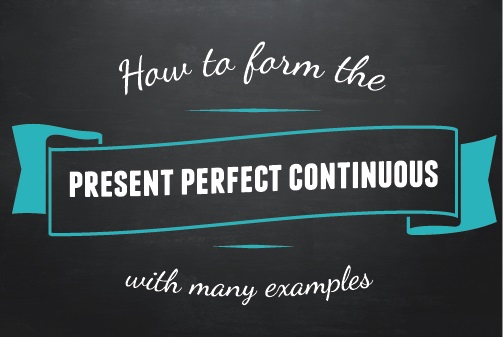
Let's learn how to form the present perfect continuous tense.
This tense is formed using the auxiliary verb "have" / 'has" plus the past participle of the verb "be" (been) plus the -ing form of the main verb.
We'll learn how to make positive and negative forms, short forms (contractions) and questions.
[Note: Click here to learn how to use the present perfect continuous.]
Present perfect continuous affirmative statements
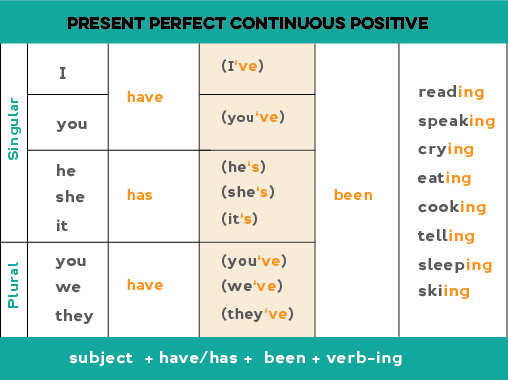
To form the present perfect continuous:
Use "have" / "has" + the past participle of "be" (been) + the -ing form of the main verb.
Note: You can also use contractions: I have = I've; you have = you've; he has = he's; she has = she's we have = we've; they have = they've
- I have been feeling great these days.
- He's been crying since his girlfriend left him two months ago.
- We've been praying for your recovery.
- My dog has been barking all morning.
- The sun has been shining all day.
- I've been working as a cashier for two years.
Present perfect continuous negative statements
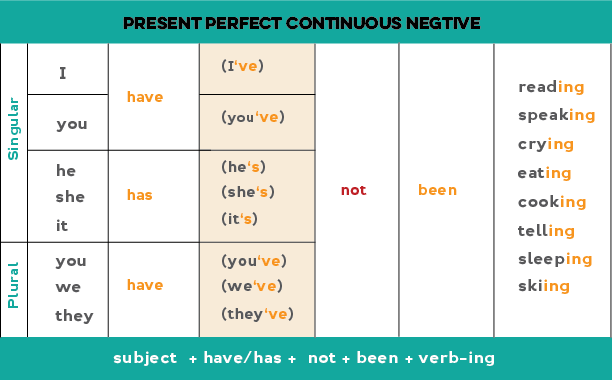
To form the negative, simply add "not" after "have" / "has":
- subject + have / has + not + been + -ing form of the main verb.
We can also use the contractions hasn't (has not = hasn't) and haven't (have not = haven't)
Examples:
- He has not been sleeping well the last two months.
- I've not been eating enough vegetables these days.
- My boss has not been coming into the office regularly.
- It hasn't been raining for very long.
- You haven't been studying enough to do well in school.
Yes / no questions
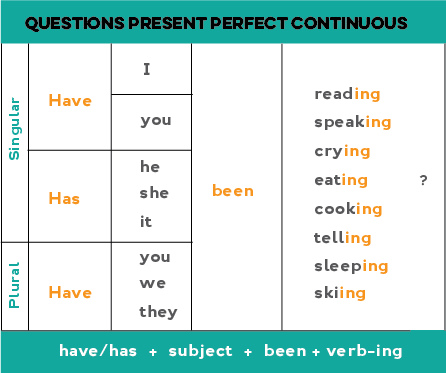
To form questions use:
- Has / have + subject + been + -ing form of main verb + ?
Examples:
- Has the baby been sleeping long?
- Have they been working on the report?
- Has your mother been staying at the beach house?
- Have you been feeling better these days?
- Have you been keeping to your diet or eating sweets?
Wh- questions
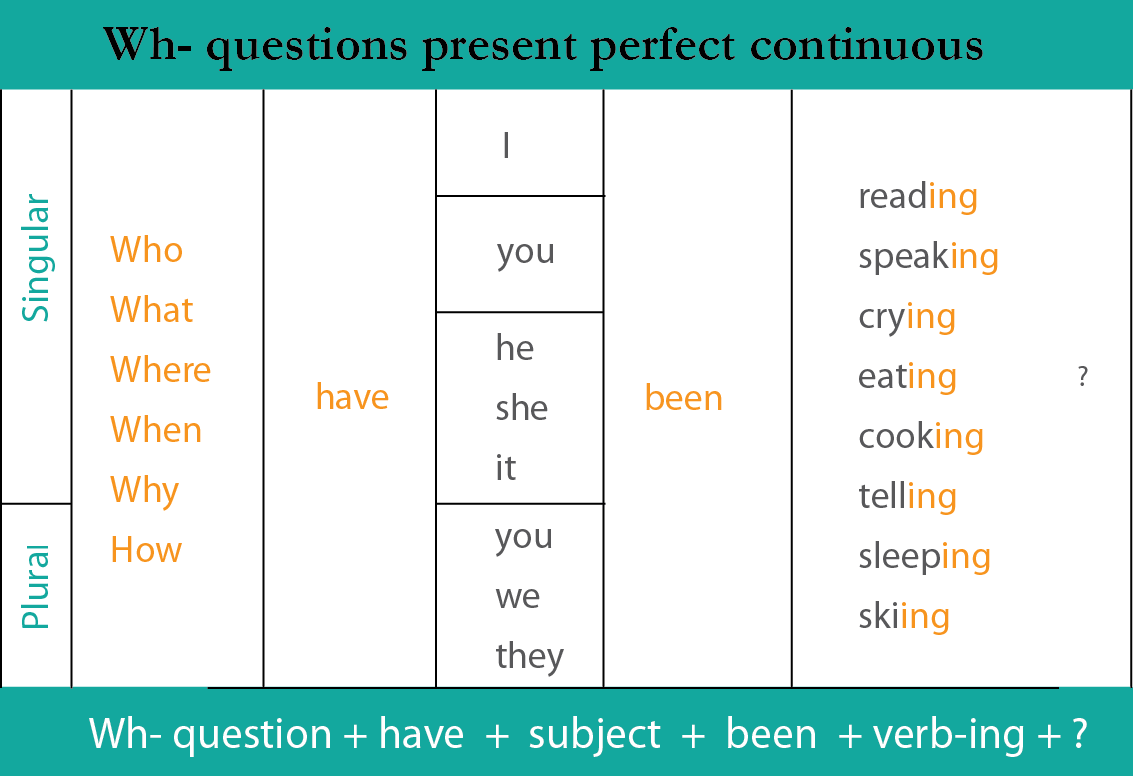
Notice the word order.
The wh- question word comes before "have" / "has" and then followed by the subject and the past participle of "be" (been) and then -ing of main verb.
Examples:
- What have you been doing these days?
- Where has your daughter been living since she graduated college?
- How long have you been playing tennis?
- Why haven't you been answering my calls?
- Who has been eating my cookies?
- Since when has your back been hurting?
Check back for exercises that will help you practice the present perfect continuous in its different forms.
Click here to learn when to USE the present perfect continuous.
- Home Page ›
- Main Grammar Page ›
- Use: Present Perfect Continuous >
- Form: Present Perfect Continuous
